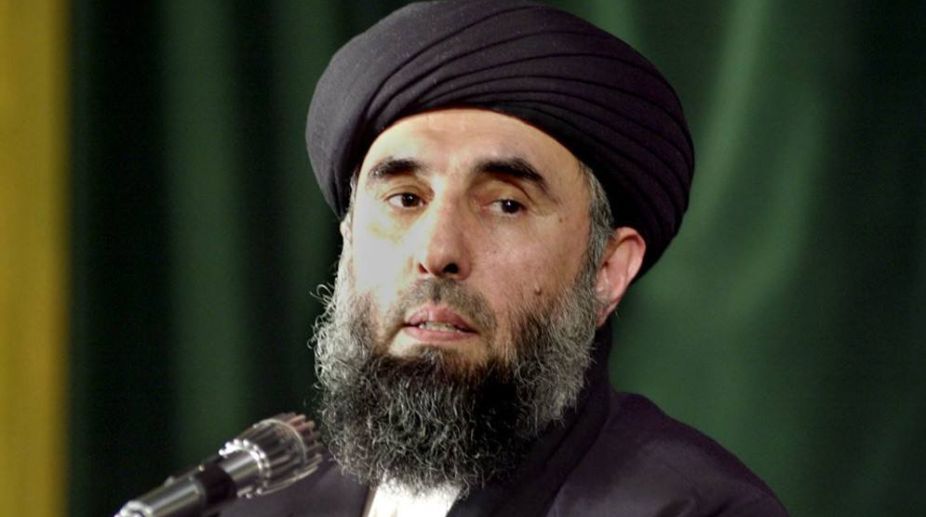The return of Gulbuddin Hekmatyar, perhaps, the most notorious Afghan warlord, may significantly influence power dynamics in war-torn Afghanistan, initiating a new alignment of political forces and provoking old rivalries. Once declared a ‘global terrorist’, the insurgent leader was pardoned by the Afghan government as part of a peace deal formalised last September. The UN last week lifted the sanctions on him paving the way for his return to public life.
While the government of President Ashraf Ghani has described the peace deal as a major breakthrough in the effort to find a political solution to the Afghan crisis, some analysts believe that Hekhmatyar’s return could complicate the situation even more. The amnesty has further divided the fractious ruling coalition in the country and provoked protests from human rights groups.
Once dubbed the ‘butcher of Kabul’ for bringing death to thousands of people in the relentless bombing of the capital by his fighters during the Afghan civil war in the mid-1990s, Hekmatyar remains one of the most hated warlords. The civil war is reported to have resulted in the deaths of around 50,000 civilians in Kabul alone. Ironically, all those warlords responsible for the mass murder are now part of the new order.
Hekmatyar’s re-emergence is likely to intensify the power struggle in the country that is facing a rising Taliban threat. His inclusion in the fold may further prove a disincentive for the Afghan Taliban’s coming to the negotiating table. Despite their common cause against the American occupation, the two insurgent groups have been extremely suspicious of each other.
It was once the most powerful force fighting the former Soviet occupation forces, but the influence of the Hezb-i-Islami has been reduced to a few provinces in recent years. The group had been dormant for quite sometime with little to show for its success on the battlefield. Hekmatyar himself kept moving between Afghanistan and Pakistan where he had some support particularly among the Afghan refugees living in the Shamshatu camp on the outskirts of Peshawar.
The ISI’s blue-eyed boy during the anti-Soviet Afghan jihad, Hekmatyar lost the support of the Pakistani military establishment after the rise of the Taliban to power in Kabul. Earlier, he was made prime minister in the transition government comprising various mujahideen groups after the fall of the Najibullah government in 1992. But he never took charge and, instead, kept bombing Kabul from his headquarters in Sarobi.
He moved to Iran after his fighters were routed by the Taliban where he aligned himself with the same mujahideen commanders he had been fighting against for years. That devastated Afghanistan and paved the way for the emergence of the Taliban. He returned to Pakistan after being expelled from Tehran in 2002 and declared war against the US occupation forces.
In 2003, the State Department designated Hezb as a terrorist group and froze all its assets for the group’s alleged links to Al Qaeda. In an interview in 2006, he boasted that his group helped Osama bin Laden and Ayman al-Zawahiri get out of the caves and led them to a safe place, though he later denied having any Al Qaeda links.
Hekmatyar’s relations with the Pakistani military establishment during that period remained ambiguous though he was reported to have spent most of his time in Pakistan. His links with some of his old allies among Pakistani religious groups like the Jamaat-i-Islami, however, remained intact, providing his group logistic and material support.
Over the years, a number of prominent Hezb leaders deserted the party and joined the government; some of them even held senior positions in former president Hamid Karzai’s administration. The split is believed to be one of the reasons why Hekmatyar opted for reconciliation. The agreement was reached after protracted negotiations that led to the release of many Hezb fighters from Afghan prisons.
Under the agreement, Hekmatyar has agreed to cease hostilities, cut ties to extremist groups and respect the Afghan constitution in exchange for government recognition of his group. Hekmatyar has also been promised an honorary post in the government, but it is not clear whether he will accept the offer. This reconciliation, however, remains rocky because of the strong opposition within the ruling coalition. Many of the Hezb commanders were reportedly arrested on their return.
For sure, reconciliation would help reunify the party and allow it to regain political space. Some observers believe that the former prime minister could even emerge as one of the strongest forces in the fractious political landscape. Being a Pakhtun may also help him get the support of some tribes in eastern and central Afghanistan that are the main centres of the insurgency. But it is highly unlikely that Hezb would be able to make inroads into Taliban strongholds.
A shrewd political operator Hekmatyar will be looking to forge alliances with other warlords and former mujahideen commanders whom he fought during the civil war. Everything is possible in the shifting sands of Afghan politics. But his return could also revive old rivalries and bitter animosities.
Dawn/ANN










